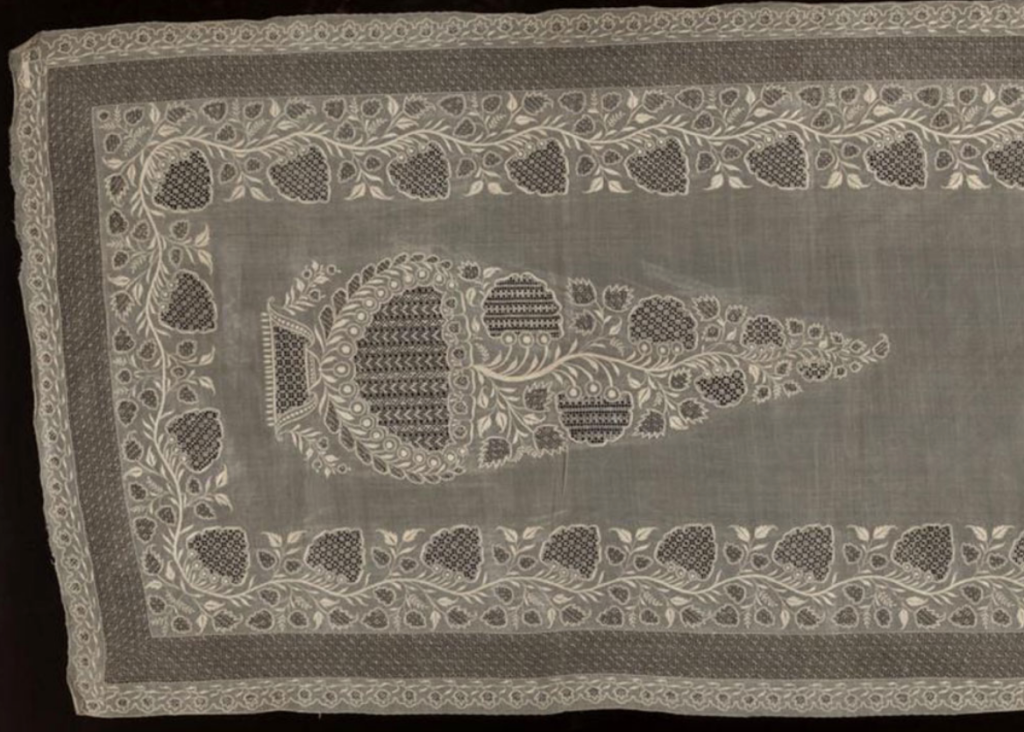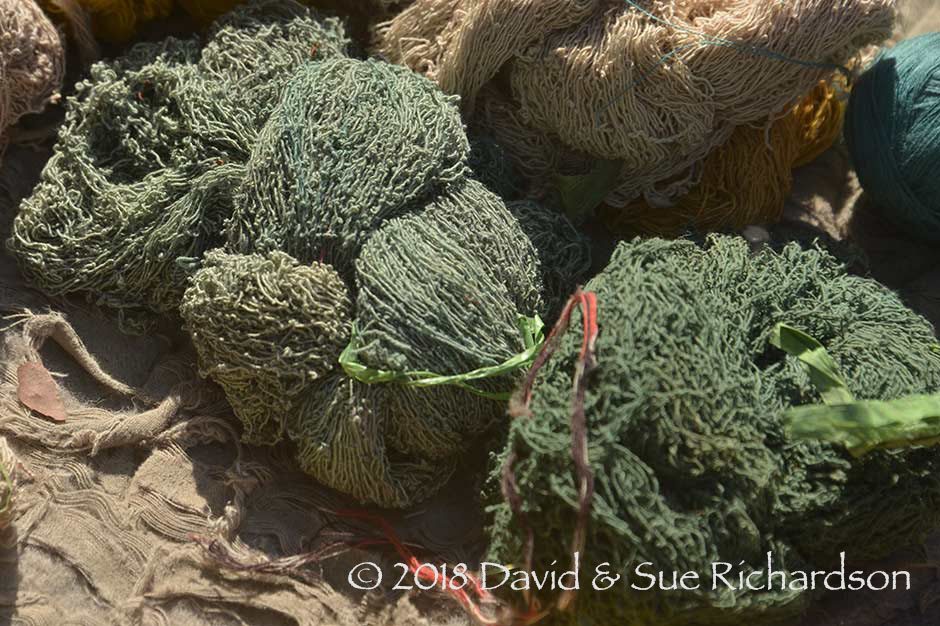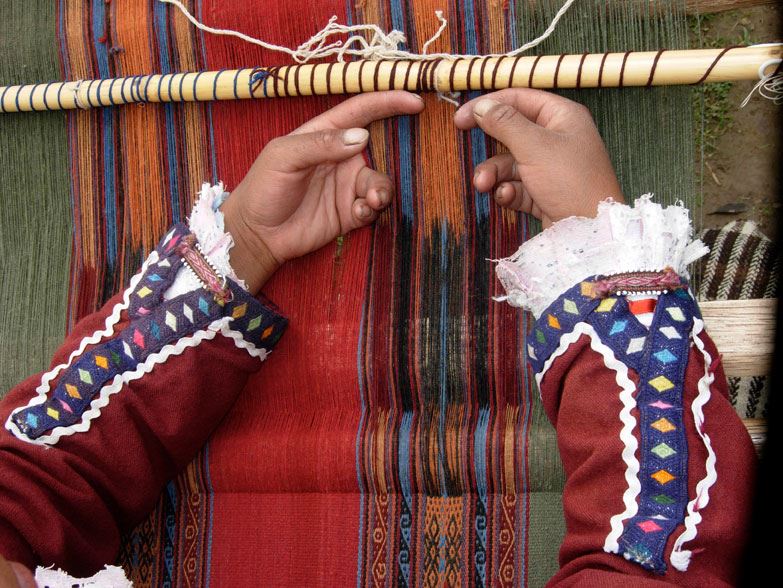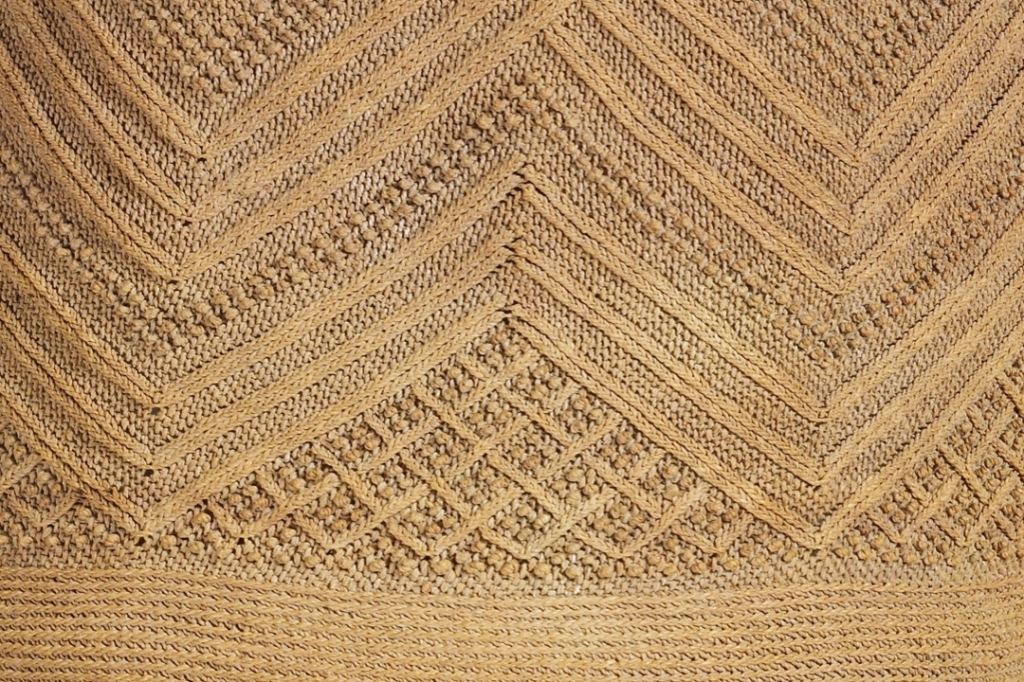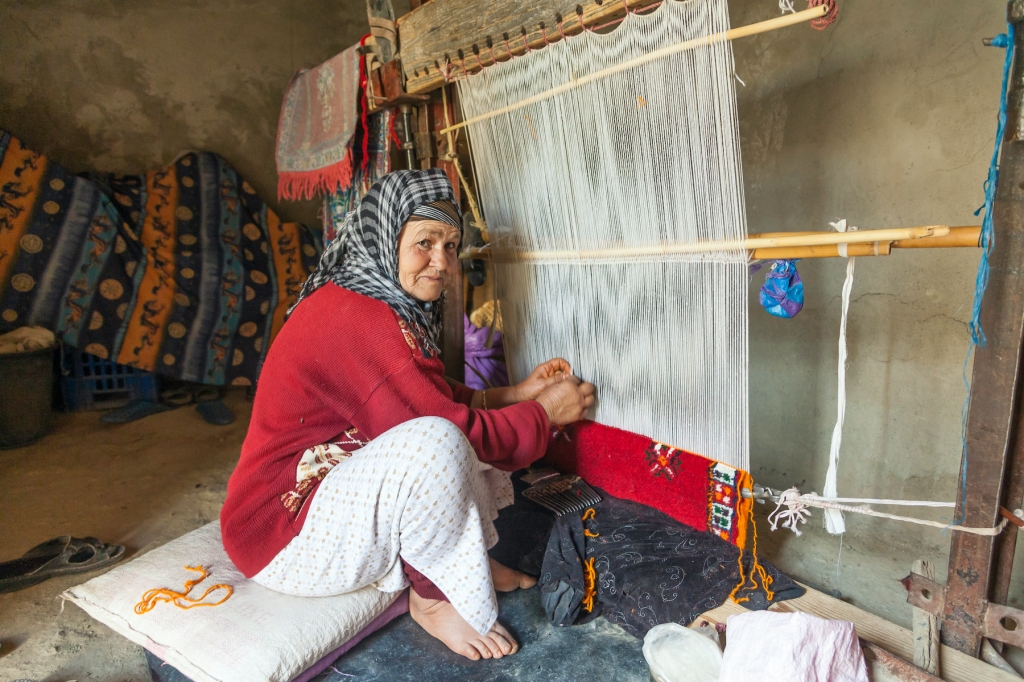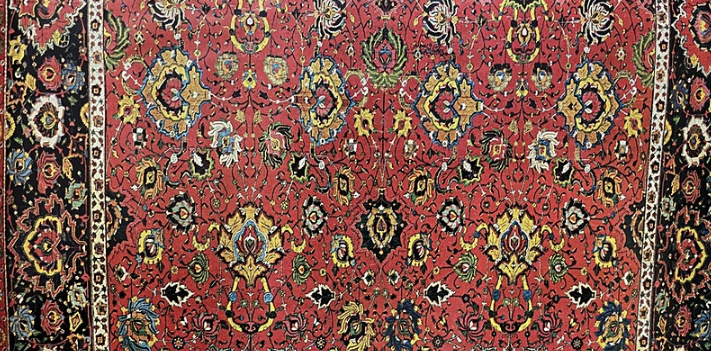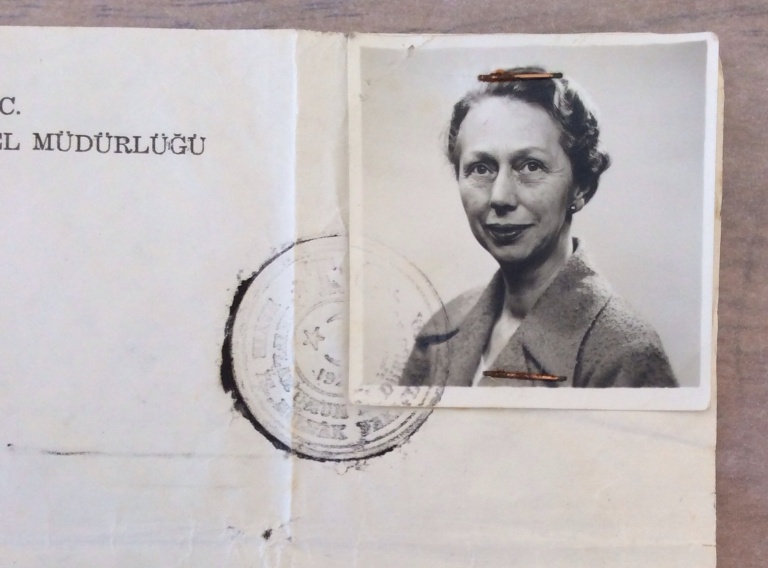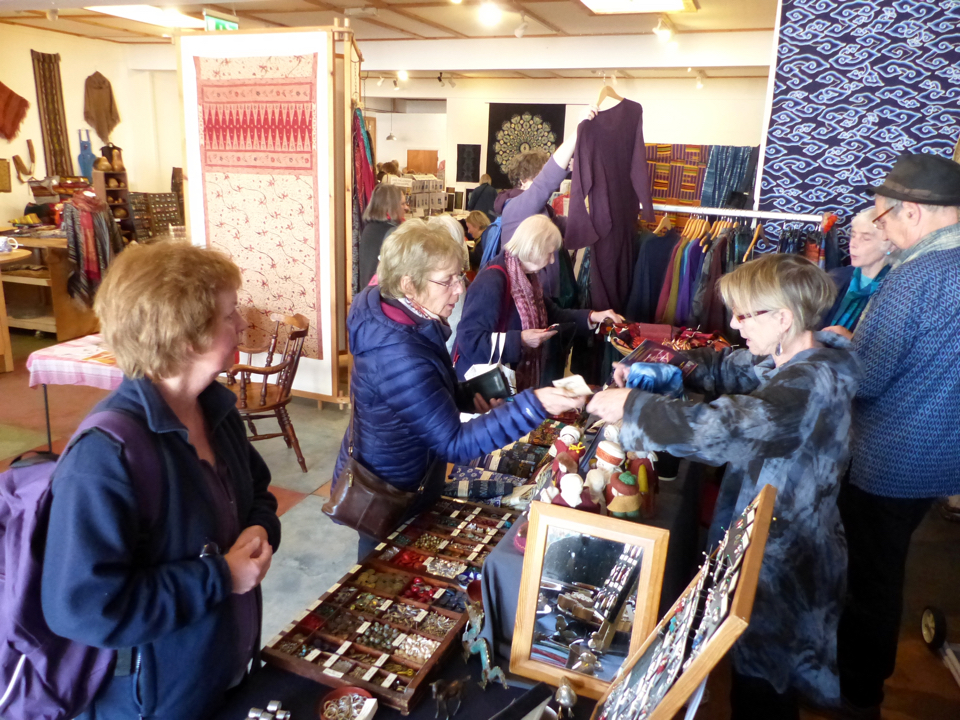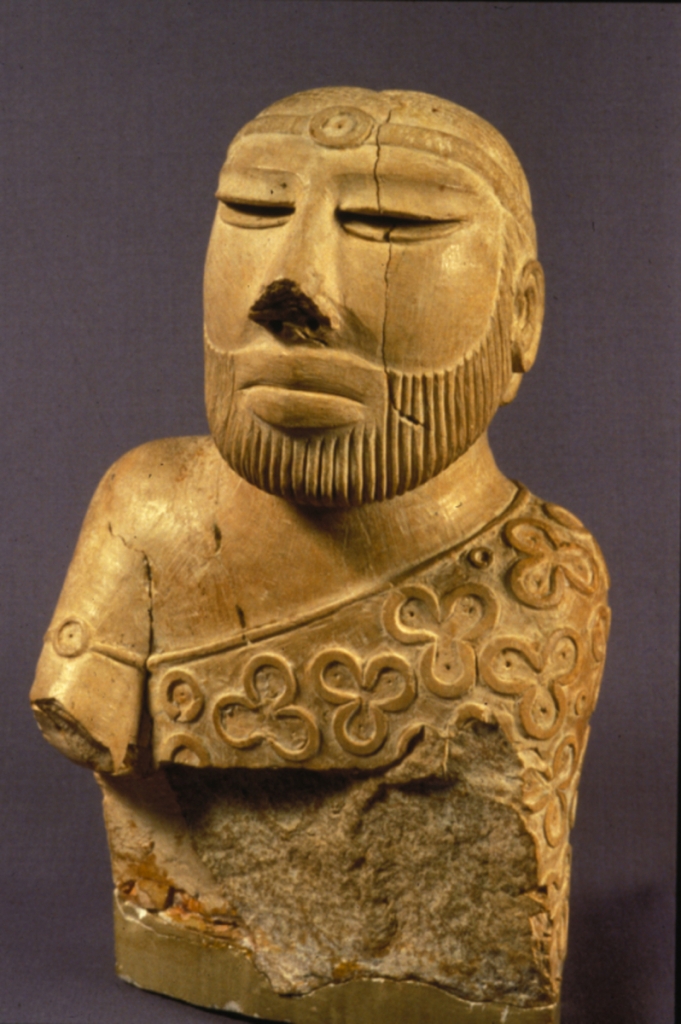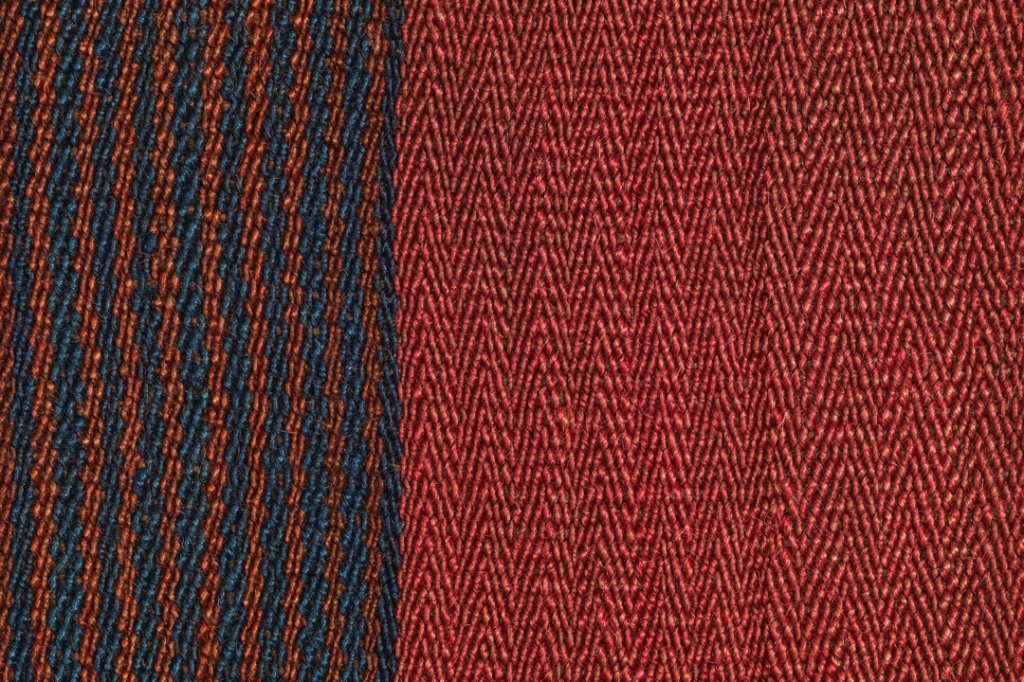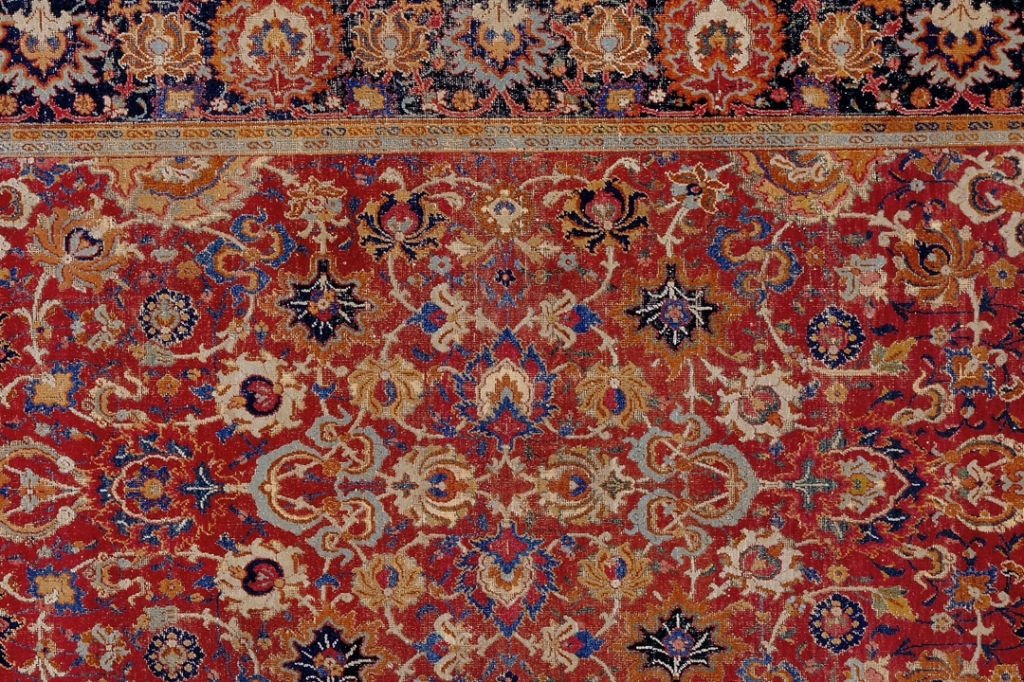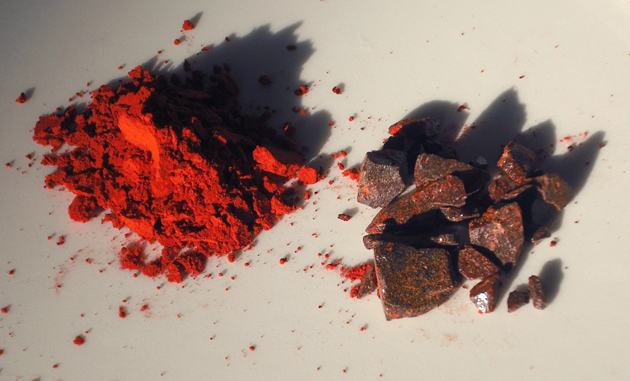
PLEASE NOTE Subscribers who usually read this blog via their email may need to click on the blue title to access it through our WordPress site instead to enable them to watch the videos.

Several OATG members recently visited the Fashion and Textile Museum, London to see the exhibition 150 years of the Royal School of Needlework: Crown to Catwalk. The group was guided around the exhibition by Sue Miller, and were grateful for her insights.

One of the pieces that stood out was this wonderful woollen cloak, incorporating cotton hand embroidery, glass, jewels and metal threads. It was one of four pieces made by Livia Paplernick for her final show, and was chosen to represent the contemporary aspect of the Royal School of Needlework.
In my most recent blog I mentioned an event at the Royal Ontario Museum. The video of Curator Conversations: For the Past, Present and Future of Ajrakh Blockprinting is now available to view at your leisure.
In it Sarah Fee is in conversation with textile artist Salemamad Khatri on his work to create and revitalize Ajrakh blockprinting in Kachchh, India. They are joined by Abdulaziz Khatri, trade manager at Khamir (a platform for the promotion of traditional art) to explore the role of artists and their supporters to preserve and promote the culture, community and environment of Kachchh.
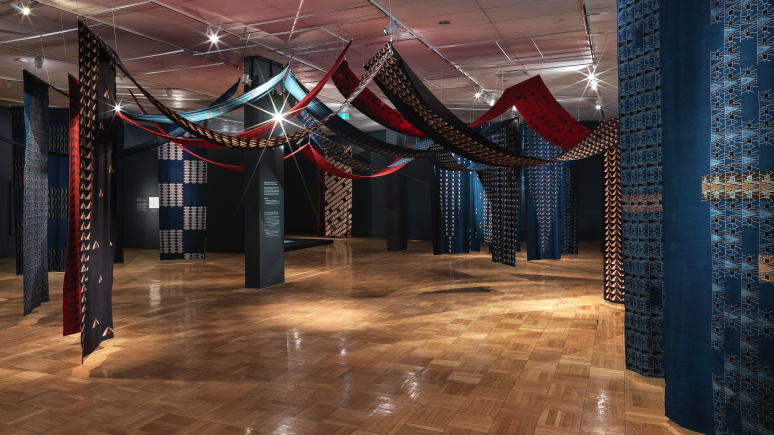
A key collaborator of Canadian contemporary artist Swapnaa Tamhane in the creation of the exhibition Swapnaa Tamhane: Mobile Palace, Khatri’s work is an integral part of the installations. Here he gives his perspective on the process of producing the textiles for the exhibition, and the difference between producing his own artwork and working with a contemporary visual artist.
Turning next to a few events taking place around the world.
A new permanent exhibition of textiles has opened at the Ayala Museum in Manila. Skeins of Knowledge, Threads of Wisdom: The Mercedes Zobel Collection of Indigenous Philippine Textiles has been curated by Patricia M. Araneta and Floy Quintos, and the installation was designed by Gino Gonzalez. It shows how the “indigenous textile arts in the Philippines demonstrate the ingenuity, creativity, adaptability, and sophistication of the early Filipinos.” – museum website.

Even if (like me) you can’t go to the exhibition, I would strongly recommend reading this excellent guide, produced by the museum. It has superb images – though some of them do take a while to download. I was fascinated to learn that abaca (fibre from a plant in the banana family) cloth gets its sheen from being burnished with a cowrie shell.

The temporary exhibition Langs Geborduurde Wegen (Along Embroidered Roads) at the Museum de Kantfabriek in Horst, The Netherlands will now be on show until the end of 2022. It showcases some of the textiles from the extensive collection of Ien Rappoldt, who has been visiting Guizhou province for the past two decades, recording the embroidery art of the women.

The special exhibition Humans, Beasts, Gods. Textile Treasures from Ancient Peru continues at the Abegg-Stiftung in Switzerland until 13 November 2022.
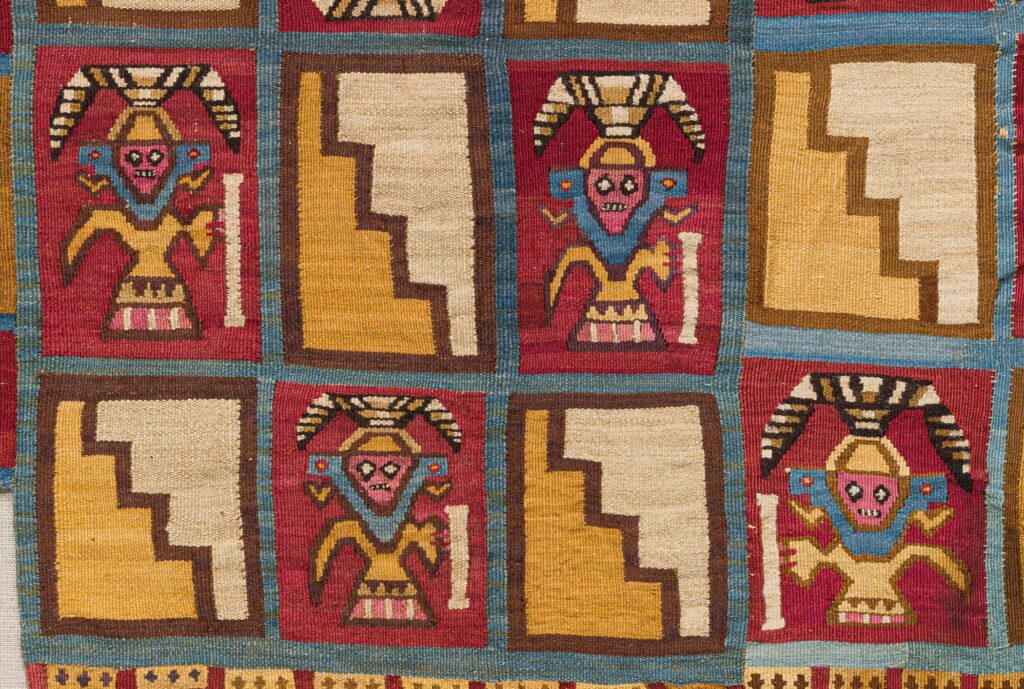
Among the holdings of the Abegg-Stiftung in Riggisberg is a small but impressive collection of textiles from Ancient Peru. The majority of these early Peruvian textiles were collected by Werner Abegg between 1930 and 1933.
“The most interesting of these are now presented to the public for the first time in a dedicated exhibition.
The peoples of Ancient Peru were already producing a vast array of finely crafted fabrics and garments over two thousand years ago. That we can marvel at them today is thanks to a combination of climatic and geographical conditions, specifically the dry, salty soils of the desert regions of coastal Peru, in which these precious artefacts were preserved. Protected against both moisture and light, they survived the ravages of time either as offerings to the gods or as grave goods, the burial customs of past civilizations being a crucial factor in the “survival” of countless Peruvian textiles. ” – Museum website
I’ve already blogged several times about the Japanese textiles exhibition currently showing at the Minneapolis Institute of Art.

On Thursday 18 August textile conservator Dr Ishii Mie will examine Japanese Textiles: Traditional Dyes and Conservation Methods. An associate professor of art at Saga University, Japan, Dr. Ishii will introduce methods of textile conservation and recovery using examples from the royal collection stored at Shuri Castle in Okinawa, which was severely damaged by fire in 2019, and will describe the various techniques of textile dyeing in Japan. This is an in-person event, which begins at 18:30 CDT. Click here to book.
A new exhibition opens this week at the Powerhouse Museum in Sydney to coincide with the 75th anniversary of India’s independence.
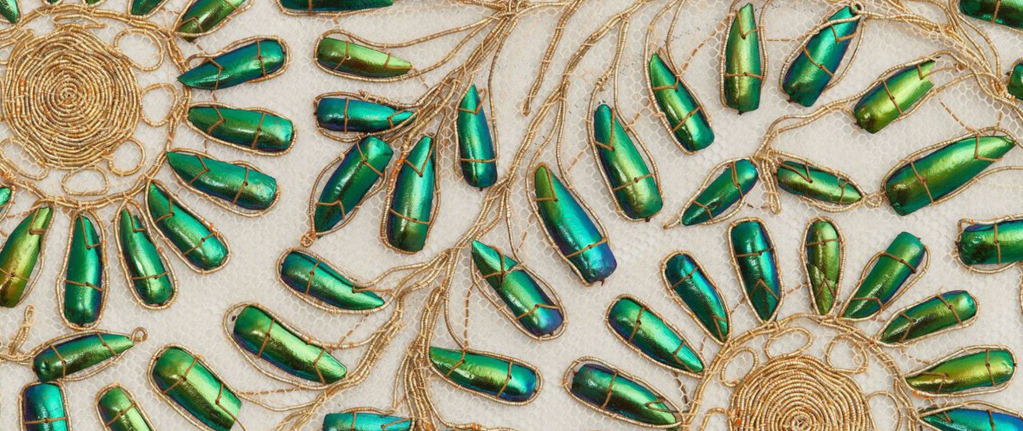
The exhibition is called Charka and Kargha – a charka being a spinning wheel and a kargha a loom. “The exhibition will feature over 100 rare items that date back to the foundational collections of the Powerhouse acquired since the 1880s. In addition to their beauty, many of the textiles featured in the exhibition incorporate spinning, weaving, dyeing and embroidery techniques. Highlights include block-printed textiles, known as Fustat fragments, believed to be made in Gujarat in the 1400s.” – Museum website
This exhibition runs until January 2023.
I’ve blogged previously about the Kimono Style exhibition at The Metropolitan Museum in New York. On Saturday 20 August 2022 two Met experts, Monika Bincsik and Marco Leona, “explore the history and modernization of the Japanese kimono. Learn about Japan’s famed weaving, dying, and embroidery techniques along with discoveries from new scientific research.” – Museum website.

This is a pre-recorded programme which will be available on YouTube and Facebook at 10:00 EDT, which is 15:00 BST. Click here for more details.




